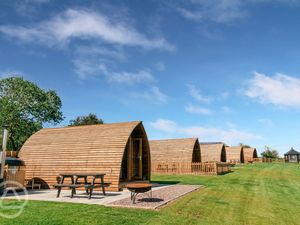How airport shutdown grounded drone users
The popularity of drones is soaring – but recently they’ve hit the headlines for the wrong reasons.

Over the last month, Britain’s two busiest airports – Heathrow and Gatwick – have been brought to a standstill because of reported drone sightings.
At Gatwick 1,000 flights were cancelled over three days just before Christmas, causing chaos for travellers.
Drones, or unmanned aerial vehicles, used to be available for military purposes only, but are now readily available on the High Street for less than £40.
Most of those in the air are small, remote-controlled quadcopters used by hobbyists and photographers. Others are used in the construction, agricultural and engineering industries.
The law has yet to catch up with the rapid advances in technology, and the Government now wants to extend drone exclusion zones around commercial airports from 1km to 5km with additional extensions from runway ends.
From November 30, operators of drones weighing between 250g and 20kg will need to be registered, and police have been given new powers to tackle illegal use.
For some drone users, it can make them feel like they are being treated like criminals.
For leisure centre manager Bill Sheargold, aged 59, from Willenhall flying a drone is a fun hobby and he takes the responsibilities that come with owning one seriously.
“I have been flying drones for about 18 months with no problems just by following simple rules and common sense,” he said.
“I am concerned that there might be more restrictions just because of what’s happened at Gatwick and Heathrow, I would hate for there to be a knee-jerk reaction because most drone pilots are well aware of the rules and the drone code everyone follows.”
When going out with his DJI Phantom 4 Pro, he picks spot away from any built up areas or large crowds.
His device, like many others, comes with software that allows him to check the surroundings first to ensure it’s safe to take off.
“These drones come with lots of software and an app to keep you out of trouble,” he said. “It lets you know about any flying restrictions in the nearby area or any events where they might be crowds as you have to be 150 metres from them.”
“You would be silly not to check it,” says fellow flyer Ryan Hawtin, 36, from Wednesfield, who owns a DJI Mavic Air.
Ryan uses his to track and photograph him while he’s cycling and running, and says while most drone owners want to abide by the rules, they also want to keep any expensive kit safe.
“Most of us are responsible and we’ve spent the time trying to learn everything there is to know about drones so we are well aware of the rules. There are fines and possible imprisonment if we don’t.
“Some people spend anywhere between £200 and £2,000 on their drones so they aren’t going risk damaging it.
“Before the incidents at Gatwick and Heathrow people would see me out with the drone and maybe think it was a toy but since what happened I’ve noticed people starring and wondering whether I’m allowed to be doing it. I would hate there to be so many restrictions that I couldn’t take photos of my family at the beach.”
Paul Hutchinson who owns Virtual Shropshire Drone Rangers and specialises in aerial photography and video says people using drones in the county need to take extra care.
“Shropshire is a designated military low flying area which creates additional challenges for drone operators,” says Mr Hutchinson, who is a Civil Aviation Authority (CAA) qualified drone pilot.
“Civilian aircraft are not allowed to fly below 500ft, except take off and landing, and drones are not allowed above 400ft so in normal circumstances there is a 100ft safety gap.
“However military aircraft can operate at any height and in Shropshire it is not unusual to see helicopters from RAF Shawbury flying at tree-top height. “We always telephone RAF Shawbury to let them know our location when working during their operational hours.
“It’s important to keep a good lookout for low flying aircraft. Also be aware of livestock. Horses in particular can be very nervous of drones.”
Luke Dell from Wolverhampton runs a business specialising in aerial cinematography and photography as well as building surveys and 3D mapping.
The 26-year-old, who teaches young people how to fly drones safely, says he advises for flyers to never take their eye off their device while it’s in the air and to be aware of their surroundings.
“Ensure you can see your drone at all times – this is known as visual line of sight.
“Drone pilots need to keep clear of people, vehicles and buildings by at least 50m, and congested areas and large gatherings of people by at least 150m,” he said.





